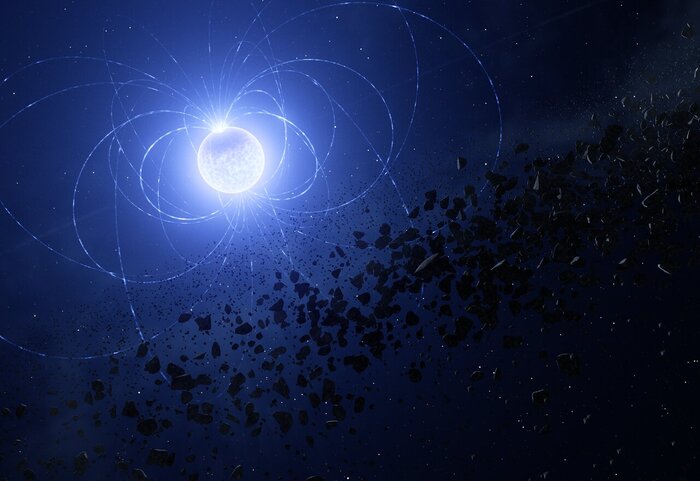A cannibalistic star has swallowed fragments of its planetary system: the phenomenon has been known for some time, but for the first time a truly particular proof of this crime has been found in a scar made of metals that extends for about 500 kilometers on its surface .
The result, published in The Astrophysical Journal Letters and led by the Armagh Observatory in Northern Ireland, was obtained thanks to the Very Large Telescope of the European Southern Observatory, located in Chile. Similar observations could be useful in revealing the composition of the planets outside the Solar System.
The scar, observed by the group of researchers led by Stefano Bagnulo, is a concentration of metals imprinted on a white dwarf, i.e. on a star that was once similar to the Sun and which, having reached the last phase of its life, slowly cools reaching dimensions equal to those of the Earth.
Previously, numerous white dwarfs had been observed polluted by metals, brought there by disrupted planets or asteroids that passed too close to the star, but in this case the material was guided by the magnetic field of the white dwarf, through a process similar to the one that produces auroras on both Earth and Jupiter.
“We have shown that these metals come from a planetary fragment as large as or perhaps larger than Vesta, the second largest asteroid in the Solar System,” comments Jay Farihi of University College London, co-author of the study.
“Surprisingly, the material was not evenly mixed on the surface of the star,” adds John Landstreet of Canada's University of Western Ontario and Armagh Observatory, another co-author.
“Instead, this scar is concentrated – says Landstreet – and held in place by the same magnetic field that guided the fall of the fragments: nothing like it has ever been seen before.”
Reproduction reserved © Copyright ANSA

